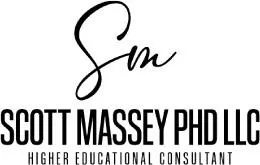BLOG
SCOTT'S THOUGHTS

The Journey from Clinician to Educator: Embracing Reinvention
It was August 1991 when I first stepped into a silent, empty classroom. Anxiety weighed heavily on me. In just two weeks, I would be standing in front of PA students, expected to teach. Despite years of clinical experience, I had no idea how to develop lectures or engage students. I felt like an imposter in a white coat—the same uncertainty I had when treating my first patient.
During my first year as a PA educator, I spent an average of 80 hours a week trying to navigate the steep learning curve of academia. I vividly remember the sinking feeling after giving an exam that completely missed the mark. My teaching method was pure lecture—not because it was the best way, but because it was all I knew. The fear of student questions kept me up at night, leading to countless hours of pre-emptive studying to avoid not knowing an answer.
Over time, I learned to embrace my limitations. I realized that encouraging students to find answers on their own wasn’t just acceptable—it was essential for their growth. Looking back, I see that my struggles mirrored those of many new faculty transitioning from clinical practice to academia. During my first three years, I often considered returning to clinical work, a path many new PA educators ultimately take due to the overwhelming challenges.
This blog is dedicated to those struggling PA educators across the country. As someone who has been through this transition, I can say with confidence that personal reinvention is the key to success.
We are all in a constant state of reinvention. Many of us will change careers multiple times, and as PAs, switching specialties is common. Each shift re-engages us in the learning process, keeping our passion alive. Moving from clinician to educator requires a complete transformation—not just in skillset, but in mindset. While we bring knowledge and experience, we must also develop an entirely new approach to teaching.
So, how can we support new PA educators? First, be patient with yourself. Becoming an educator, much like practicing medicine, takes time and practice. It’s normal to feel insecure and overwhelmed. The transition mirrors the uncertainty of the first year as a new graduate in clinical practice.
How do you navigate reinvention? One resource that helped me was Dorie Clark’s book Reinventing You (link). Reflecting on my 30+ years in the PA profession, I’ve continually evolved—first as a clinician, then as an educator, researcher, and author. Now, I am embarking on a new chapter as an entrepreneur.
Why does this matter? Because we, as PA educators, must prepare our students for a lifetime of reinvention. In our classrooms, we are shaping future clinicians, educators, researchers, and innovators. The best lesson we can offer is to lead by example—embracing change and reinvention so that we can become the best educators possible.

The Journey from Clinician to Educator: Embracing Reinvention
It was August 1991 when I first stepped into a silent, empty classroom. Anxiety weighed heavily on me. In just two weeks, I would be standing in front of PA students, expected to teach. Despite years of clinical experience, I had no idea how to develop lectures or engage students. I felt like an imposter in a white coat—the same uncertainty I had when treating my first patient.
During my first year as a PA educator, I spent an average of 80 hours a week trying to navigate the steep learning curve of academia. I vividly remember the sinking feeling after giving an exam that completely missed the mark. My teaching method was pure lecture—not because it was the best way, but because it was all I knew. The fear of student questions kept me up at night, leading to countless hours of pre-emptive studying to avoid not knowing an answer.
Over time, I learned to embrace my limitations. I realized that encouraging students to find answers on their own wasn’t just acceptable—it was essential for their growth. Looking back, I see that my struggles mirrored those of many new faculty transitioning from clinical practice to academia. During my first three years, I often considered returning to clinical work, a path many new PA educators ultimately take due to the overwhelming challenges.
This blog is dedicated to those struggling PA educators across the country. As someone who has been through this transition, I can say with confidence that personal reinvention is the key to success.
We are all in a constant state of reinvention. Many of us will change careers multiple times, and as PAs, switching specialties is common. Each shift re-engages us in the learning process, keeping our passion alive. Moving from clinician to educator requires a complete transformation—not just in skillset, but in mindset. While we bring knowledge and experience, we must also develop an entirely new approach to teaching.
So, how can we support new PA educators? First, be patient with yourself. Becoming an educator, much like practicing medicine, takes time and practice. It’s normal to feel insecure and overwhelmed. The transition mirrors the uncertainty of the first year as a new graduate in clinical practice.
How do you navigate reinvention? One resource that helped me was Dorie Clark’s book Reinventing You (link). Reflecting on my 30+ years in the PA profession, I’ve continually evolved—first as a clinician, then as an educator, researcher, and author. Now, I am embarking on a new chapter as an entrepreneur.
Why does this matter? Because we, as PA educators, must prepare our students for a lifetime of reinvention. In our classrooms, we are shaping future clinicians, educators, researchers, and innovators. The best lesson we can offer is to lead by example—embracing change and reinvention so that we can become the best educators possible.
Don't miss out on future events!
Subscribe to our newsletter

© 2025 Scott Massey Ph.D. LLC

